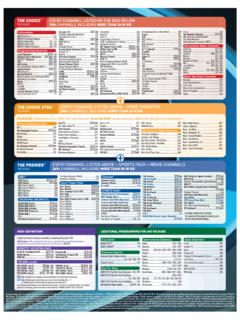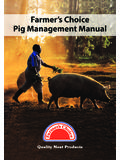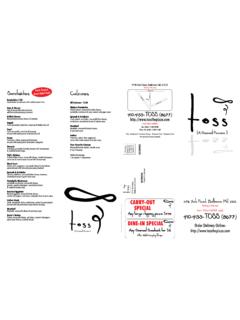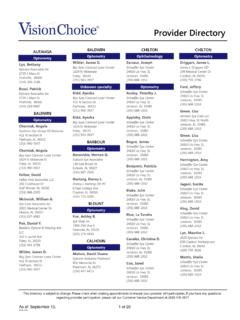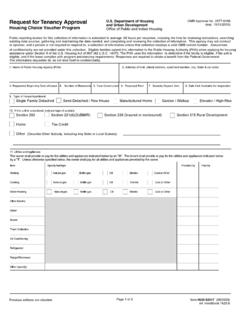Transcription of WHO GUIDE TO EFFECTIVENESS ANALYSIS
1 WHO GUIDE TOCOST- EFFECTIVENESS ANALYSISCONTENTSThe graphic on the cover is a stylized representation of Figure 5 inBackground Paper 7 showing uncertainty INHEALTH:WHO GUIDE TOCOST- EFFECTIVENESS ANALYSISEDITED BYT. TAN-TORRESEDEJER, R. BALTUSSEN, T. ADAM,R. HUTUBESSY, A. ACHARYA, EVANS MURRAYW orld Health OrganizationGenevaWHO Library Cataloguing-in-Publication DataWorld Health choices in health: WHO GUIDE to cost- EFFECTIVENESS ANALYSIS /edited by T. Tan-Torres Edejer .. [et al.]1. Cost-benefit ANALYSIS methods 2. Health care rationing economics3. Decision making4. Health priorities economics5. Models, Econometric6. GuidelinesI. Tan-Torres Edejer, WHO- choice 92 4 154601 8(LC/NLM classification: HD ) World Health Organization 2003 All rights reserved. Publications of the World Health Organization can beobtained from Marketing and Dissemination, World HealthOrganization, 20 Avenue Appia, 1211 Geneva 27, Switzerland (tel: +4122 791 2476; fax: +41 22 791 4857; email: for permission to reproduce or translate WHO publications whether for sale or for noncommercial distribution should be addressedto Publications, at the above address (fax: +41 22 791 4806; designations employed and the presentation of the material in thispublication do not imply the expression of any opinion whatsoever onthe part of the World Health Organization concerning the legal status ofany country, territory, city or area or of its authorities, or concerning thedelimitation of its frontiers or boundaries.))
2 Dotted lines on maps representapproximate border lines for which there may not yet be full mention of specific companies or of certain manufacturers productsdoes not imply that they are endorsed or recommended by the WorldHealth Organization in preference to others of a similar nature that arenot mentioned. Errors and omissions excepted, the names of proprietaryproducts are distinguished by initial capital World Health Organization does not warrant that the informationcontained in this publication is complete and correct and shall not beliable for any damages incurred as a result of its in SwitzerlandCONTENTSP reface .. IXList of Acronyms and Abbreviations .. XXIPARTONE: METHODS FOR GENERALIZEDCOST- EFFECTIVENESS is Generalized Cost- EFFECTIVENESS ANALYSIS ? .. a study using GCEA.
3 Costs .. health effects .. in cost- EFFECTIVENESS ANALYSIS .. uses of Generalized CEA .. CEA results .. of recommendations .. 93 References.. 97 Annex A. WHO- choice activities on Generalized Cost- EFFECTIVENESS ANALYSIS .. 107 Annex B. Draft list of intervention clusters for evaluation by WHO- choice .. 110 Annex C. An illustration of the types of costs included in a selection of intervention activities at central levels .. 111 Annex D. Interpreting international dollars .. 112 Annex E. DALYs to measure burden of disease.. 113 Annex F. Measuring intervention benefit at the population level .. 115 Annex G. Epidemiological subregions as applied in WHO Generalized CEA .. 118 Endnotes .. 119 PARTTWO: BACKGROUND PAPERS AND of WHO guidelines on generalized cost- EFFECTIVENESS ANALYSIS .. 125 Christopher Murray, David B.
4 Evans, Arnab Acharya, Rob Baltussen : A longitudinal population model with two interacting disease states .. 151 Jeremy A. Lauer, Klaus R hrich, Harold Wirth, Claude Charette, Steve Gribble, Christopher Murray costs in the economic evaluation of health interventions .. 177 Benjamin Johns, Rob Baltussen, Raymond estimation of country-specific hospital costs .. 197 Taghreed Adam, David B. Evans, Christopher league tables: communicating cost- EFFECTIVENESS results to decision-makers .. 217 Raymond Hutubessy, Rob Baltussen, David B. Evans, Jan J. Barendregt, Christopher Murray in cost- EFFECTIVENESS ANALYSIS : probabilistic uncertainty ANALYSIS and stochastic league tables .. 225 Rob Baltussen, Raymond Hutubessy, David B. Evans, Christopher and costs of interventions to lower systolic bloodpressure and cholesterol: a global and regional ANALYSIS on reduction of cardiovascular-disease risk.
5 237 Christopher Murray, Jeremy A. Lauer, Raymond Hutubessy, Louis Niessen, Niels Tomijima, Anthony Rodgers, Carlene Lawes, David B. cost- EFFECTIVENESS ANALYSIS : an aid to decision making in health .. 277 Raymond Hutubessy, Rob Baltussen, Tessa Tan-Torres Edejer, David B. issues in the use of cost EFFECTIVENESS ANALYSIS for the prioritization of health care resources .. 289 Dan W. BrockIndex .. 313 Many individuals have contributed to the refinement of the framework,methods and tools for generalized cost- EFFECTIVENESS ANALYSIS . Theircontributions are recognized collectively under the name WHO-CHOICEC ollaboration. In addition to them, a number of experts providedvaluable input in anonymous reviews for the published papers, during theconsultative meeting in Geneva in 2001, and during other scientificmeetings where WHO- choice or generalized cost- EFFECTIVENESS analysiswas presented.
6 Their contributions are gratefully acknowledged. Anotherimportant source of feedback has been the policy-makers and analystsfrom many different countries who have attended the workshops ongeneralized cost- EFFECTIVENESS ANALYSIS that we have conducted over thepast years. Close interaction with them as they applied the tools andtechniques gave us insights into a range of concerns from a user sperspective, and made us aware of the need to be responsive to , we would like to give special thanks to Margaret Squadrani,Marilyn Vogel, Kai Lashley and Keith Wynn who, with their dedication,patience and painstaking attention to detail, made the actual productionof the book GUIDE benefited from the input of many experts, including thoseparticipating in a meeting on Methods for Cost- EFFECTIVENESS Analysisheld in Geneva in January 2002.
7 Those who participated were: ACKNOWLEDGEMENTSDr Arnab Acharya, The Institute of Development Studies, UKDr Jan Barendregt, Erasmus University, The NetherlandsDr Stephen Birch, McMaster University, CanadaDr Dan Brock, National Institutes of Health, USADr Werner Brouwer, Erasmus University Rotterdam, The NetherlandsDr Vilma Carande-Kulis, Centers for Disease Control & Prevention, USADr Michael Drummond, University of York, UKDr Alastair Gray, University of Oxford, UKDr Paul Kind, University of York, UKDr Martin Meltzer, Centers for Disease Control and Prevention, USADr Mark Miller, National Institutes of Health, USAP rofessor Anne Mills, London School of Hygiene & Tropical Medicine,UKDr Raul Molina, Universidad Autonoma Metropolitana-Iztapalapa,MexicoDr Benjamin Nganda, University of Nairobi, KenyaDr Louis Niessen, Erasmus University.
8 The NetherlandsDr Max Price, University of the Witwatersrand, South AfricaProfessor Jeff Richardson, Centre for Health Programme Evaluation,AustraliaDr Juan Rovira, The World Bank, USADr Orville Solon, University of the Philippines, PhilippinesDr Siripen Supakankunti, Chulalongkorn University, ThailandDr Ben van Hout, Utrecht University, The NetherlandsDr Leena K. Eklund, WHO Regional Office for Europe, DenmarkDr Hossein Salehi, WHO Regional Office for the Eastern Mediterranean,EgyptThe views expressed in these guidelines are those of the authors and notnecessarily those of the number of guidelines on cost- EFFECTIVENESS ANALYSIS (CEA) already are two reasons for producing another set. The first is thattraditional ANALYSIS has focused on assessing new or additionalinterventions in comparison with current practice in that area.
9 It isdifficult to use this type of incremental ANALYSIS to determine if thecurrent mix of interventions represents an efficient use of , for all but the richest countries, the cost and time required toevaluate the large number of interventions and identify opportunities toenhance efficiency are prohibitive. It is important to maximize thepossibility of generalizing results from one setting to another. Theapproach of generalized CEA (GCEA) proposed in this GUIDE seeks toprovide analysts with a method of assessing whether the current mix ofinterventions is efficient as well as whether a proposed new technology orintervention is appropriate. It also seeks to maximize the generalizabilityof results across settings. The WHO GUIDE to Cost- EFFECTIVENESS ANALYSIS should be consideredas complementary to existing guidelines on CEA.
10 GCEA proposes theevaluation of interventions against the counterfactual of doingnothing , thereby providing decision-makers with information on whatcould be achieved if they could start again to build the health system, all health resources. As will be shown in the GUIDE , thisinformation is a prerequisite to the definition of an efficient mix ofinterventions, achievable in the long run. This specific feature notaddressed in traditional CEA which typically evaluates new interventionsin comparison with the current mix (intervention mix constrained CEAor IMC-CEA) categorizes GCEA as a different, more fundamental, typeof economic ANALYSIS . For many narrower applications of CEA, such asthe appraisal of a new version of an existing drug in a specific country,the currently practised CEA remains an appropriate method although itshould be realized that this does not inform decision-makers on the bestuse of health resources in is also possible to undertake atraditional ANALYSIS as part of a main objective of this GUIDE is to provide policy-makers andresearchers with a clear understanding of the concepts and benefits ofGCEA.










